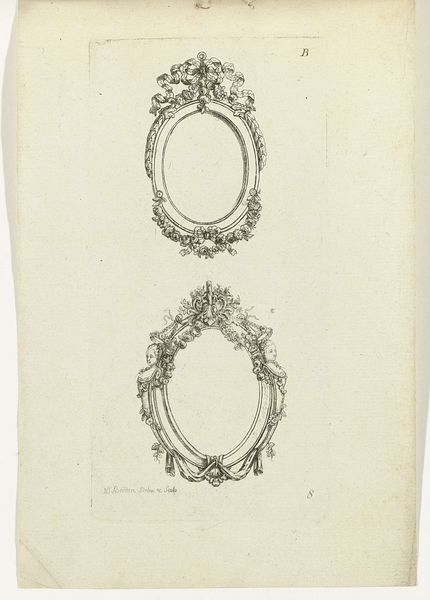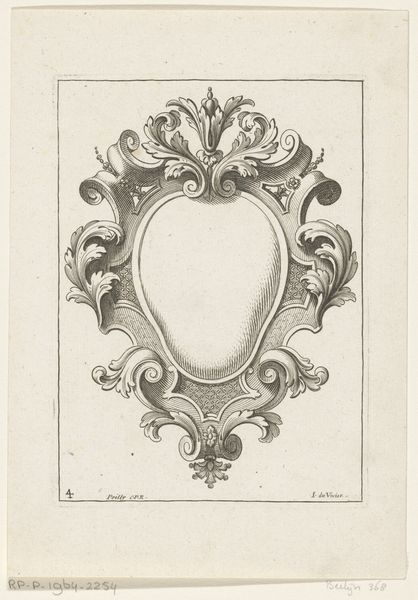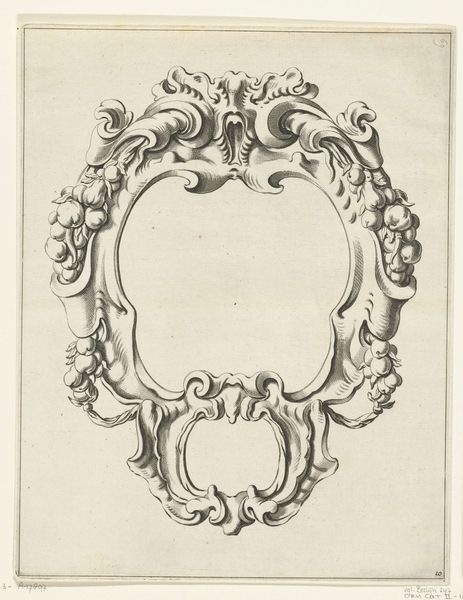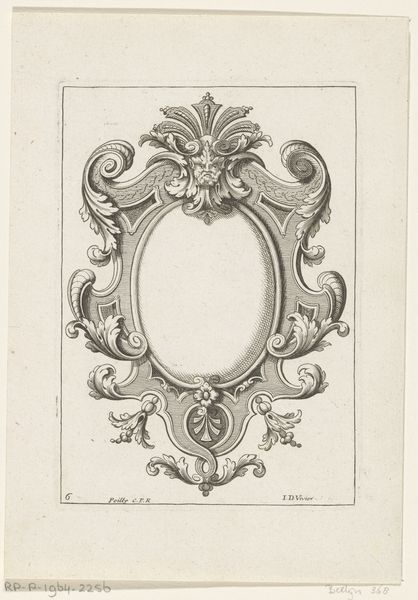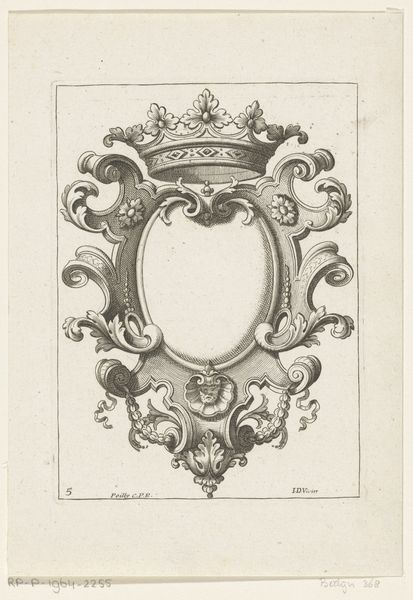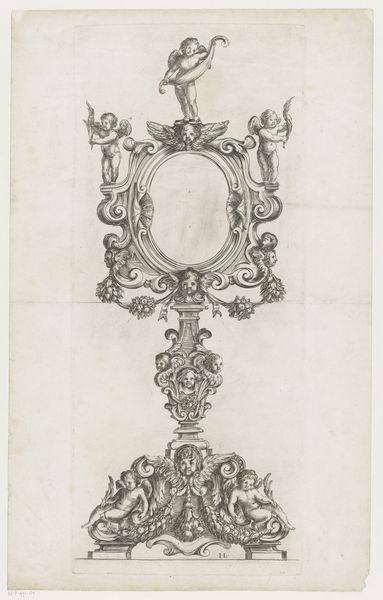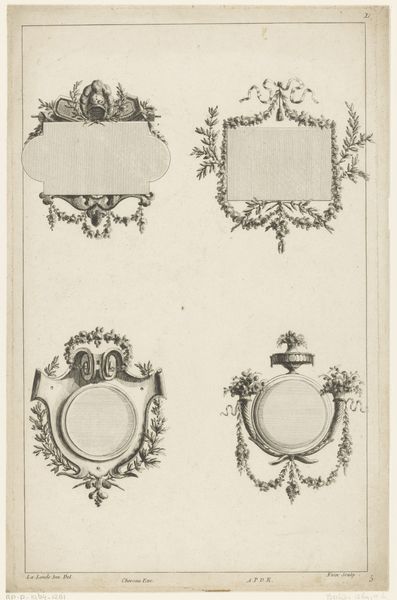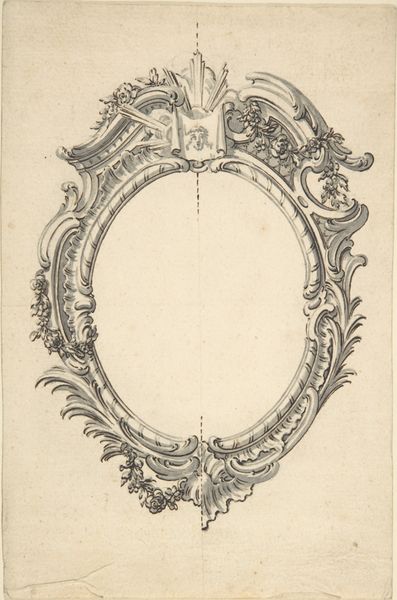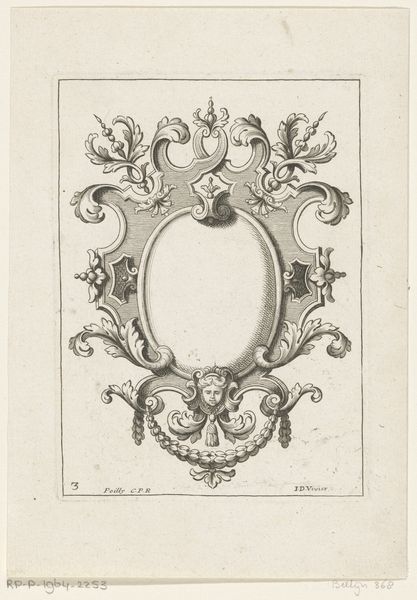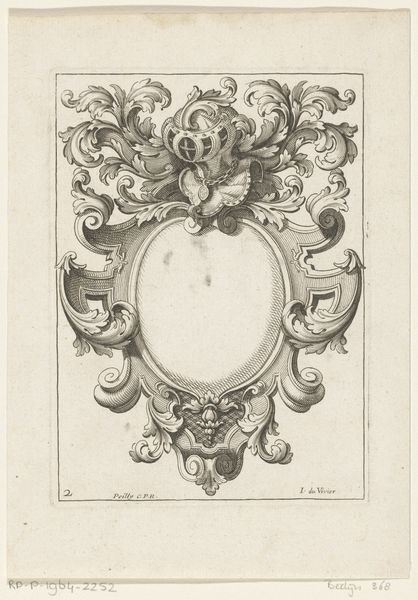
drawing, graphic-art, ornament, engraving
#
drawing
#
graphic-art
#
ornament
#
baroque
#
old engraving style
#
form
#
personal sketchbook
#
decorative-art
#
engraving
Dimensions: height 213 mm, width 170 mm
Copyright: Rijks Museum: Open Domain
Curator: Welcome. Before us, we have a graphic work entitled "Drie ovale cartouches," created between 1726 and 1734, its maker unfortunately lost to history and cataloged as anonymous. The piece utilizes engraving on what appears to be laid paper. Editor: Right, I get an immediate sense of playful elegance from this. It's like a blueprint for a party that never happened! So formal, yet the curving, almost whimsical lines keep it light. The baroque style is shouting, quietly. Curator: Indeed. The Baroque ornamentation is central to understanding its composition. Observe the emphasis on dynamism and the rather exuberant detailing. The engraving manifests as meticulously rendered acanthus leaves, shell-like volutes, and elaborate scrollwork, each contributing to a layered effect. Editor: What strikes me is the negative space inside the ovals, it’s tantalizing! Like vacant windows awaiting portraits of eccentric relatives, maybe? These empty forms make the surrounding busyness seem even more elaborate. What’s your take on the forms? Curator: The very essence of a cartouche lies in its functionality. It is, at its core, a frame – a space designated to hold text, imagery, a coat of arms, what have you. The interplay of line, texture, and form work to invite a kind of engagement with what is meant to fill this void. Editor: Well, I'm engaged. But more like my brain wants to grab some collage material, scissors and see what *I* would frame with it, you know? It feels like an invitation for anyone to come play in this gorgeous design. Even now. It's strange, isn't it, that something so carefully structured gives me permission to scribble. Curator: Precisely. I'd agree it invites not merely observation but speculation—prompting us to consider how the aesthetic function operates and shapes meaning itself, or even anticipates future use and forms. Editor: I suppose, beyond Baroque splendor, it hints that even empty frames can still hold untold potential for stories yet to come. What’s more wonderful than that?
Comments
No comments
Be the first to comment and join the conversation on the ultimate creative platform.
